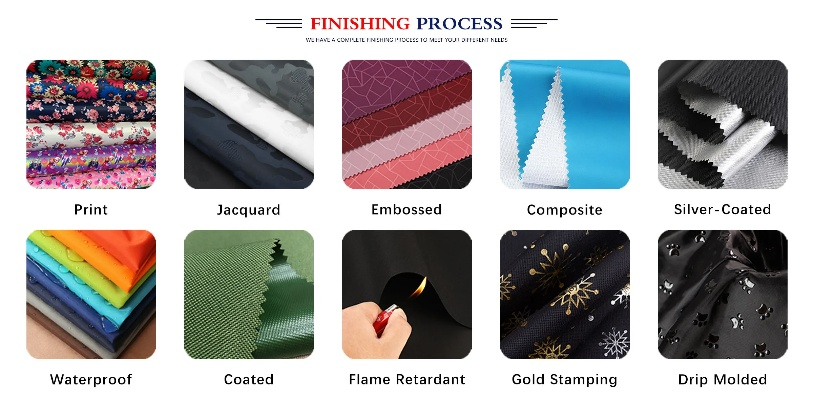Standardization in Textile Industry:Essential Measures for Proper Operations
Standardization in the textile industry is crucial for ensuring proper operations. It helps to ensure quality, reduce waste, and increase efficiency while reducing costs. Implementing standardized processes and procedures can also improve customer satisfaction by providing consistent product quality and delivery time. Additionally, it allows for easier tracking and compliance with regulations and standards. To achieve these goals, organizations should establish clear policies and guidelines that are communicated clearly to all employees. Regular training and education on best practices and new technologies can also help to ensure effective implementation of standardized measures. Finally, continuous improvement and feedback loops are important to ensure ongoing effectiveness and relevance of standardization efforts.
Introduction: The textile industry is a vital sector in many countries, employing millions of people and contributing significantly to economic growth. However, the industry faces challenges such as product quality variations, unstandardized processes, and inefficient resource use. Standardization is essential for ensuring consistent products, improving efficiency, and reducing costs. This guide will outline key steps in implementing standardization in the textile industry.
Quality Control Standards Quality control is a fundamental aspect of ensuring uniformity and high-quality standards across all operations. Here's how it can be achieved:
| Operation | Quality Control Steps |
|---|---|
| Pre-Production | Material selection, supplier certification, raw materials testing |
| In-Process | Inspection by trained personnel at various stages of production |
| Post-Production | Quality checks during packaging, labeling, and shipping |
| End-of-Life | Recycled or reused materials, disposal guidelines |
Example: Consider a company that produces clothing. At every step of the manufacturing process—from cutting the fabric to sewing the seams—specialists conduct quality checks. For instance, they might inspect the thickness of the threads used, the accuracy of stitches, or the fit of the garments.

Documentation Standards Documentation is crucial for maintaining transparency and traceability in the supply chain. Here’s how documentation can be standardized:
| Operation | Documentation Standards |
|---|---|
| Raw Materials | Supplier information, inspection reports, certifications |
| Manufacturing Process | Production schedule, quality control records, inspection notes |
| Packaging & Shipping | Packaging materials, transportation documents, tracking information |
| End-Users | Product usage instructions, returns policy, warranty information |
Example: A manufacturer might maintain a digital inventory system that tracks each piece of clothing from its origin to its final destination. Every time the product leaves the factory, a QR code is printed on the packaging. The end user scans this code using their mobile device to track the product’s journey and ensure its authenticity.
Training and Compliance Employee training and adherence to industry regulations are essential components of standardization. Here’s how they can be achieved:
| Operation | Training & Compliance Standards |
|---|---|
| Staff Training | Basic knowledge about the industry, safety procedures, quality management |
| Company Regulations | Comply with local and international laws, health and safety standards |
| Continuous Learning | Stay updated with industry advancements, new technologies, and best practices |
Example: A textile company may offer an annual seminar for employees on modern textile technology and sustainability practices. Additionally, the company ensures compliance with OSHA (Occupational Safety and Health Administration) standards and European Union directives regarding labor conditions.
Technology and Innovation Advanced technology can help streamline operations and improve consistency. Here’s how technology can be integrated:
| Operation | Technology & Innovation Standards |
|---|---|
| Process Automation | Use automated machinery to reduce human error and increase efficiency |
| Digital Asset Management | Implement software to manage inventory, track shipments, and monitor sales performance |
| Data Analytics | Use data analytics to optimize production, predict demand, and identify areas for improvement |
Example: A textile company might integrate a robotic weaving machine into its production line. This machine can produce uniformly cut pieces without human intervention. Additionally, the company may use predictive analytics software to forecast future sales trends based on past data.
Environmental Sustainability Sustainable practices are critical in today’s global climate crisis. Here's how they can be incorporated:
| Operation | Environmental Sustainability Standards |
|---|---|
| Energy Efficiency | Use renewable energy sources in factories and promote energy-saving equipment |
| Waste Minimization | Encourage waste reduction through recycling programs, composting, and other methods |
| Eco-friendly Packaging | Use biodegradable or recycled materials for packaging and minimize single-use plastics |
Example: A textile company may adopt solar panels for its factory rooftops to offset electricity costs. Additionally, the company may implement a composting program to turn scrap fabrics into fertilizer. These initiatives contribute to reducing the company's ecological footprint and fostering a more sustainable future.
Regulatory Compliance Compliance with regulatory bodies’ standards is vital for business continuity. Here are steps to ensure this:
| Operation | Regulatory Compliance Standards |
|---|---|
| Legal Compliance | Ensure compliance with all relevant laws and regulations regarding labor, environmental protection, etc. |
| Internal Audits | Conduct internal audits to identify potential gaps in compliance, address them promptly, and reinforce policies |
| Third-Party Verification | Partner with reputable third-party organizations to regularly review compliance status and provide feedback |
Example: A textile company may partner with a third-party organization to regularly audit its compliance with labor laws and environmental regulations. This organization can provide regular reports and recommendations for improvements.
Conclusion: Standardization in the textile industry is not just about meeting regulatory requirements but also enhancing product quality, streamlining operations, and promoting sustainability. By following these principles, companies can build a stronger reputation, attract customers, and remain competitive in the ever-evolving global textile market.
在当今社会,随着人们对生活品质和穿着舒适度的追求不断提高,针纺织品行业也日益受到关注,为了确保产品的质量和安全性,规范的操作流程变得尤为重要,本篇文章将围绕正规针纺织品操作展开讨论,并提供相关案例分析。
正规针纺织品操作概述
操作流程规范
正规针纺织品操作涉及多个环节,包括原料选择、纺丝、织造、染整和成品检验等,每个环节都需要遵循严格的标准和流程,以确保产品的质量和安全性。
关键要素
在正规针纺织品操作中,关键要素包括原料质量、设备性能、工艺控制、环境卫生等,优质原料是基础,先进的设备和技术是保障,而良好的工艺控制和环境卫生则是确保产品质量的关键。

案例分析
某知名品牌纺织品生产流程
某知名品牌在针纺织品生产过程中,严格遵循国家相关标准和行业规范,他们采用了高质量的原料,使用先进的设备和技术,严格控制工艺参数,他们注重环境卫生和员工培训,确保生产过程符合安全、环保的要求,该品牌的产品获得了广泛的好评和认可。
改进措施与效果
在实际操作中,一些企业在针纺织品生产过程中遇到了一些问题,如设备老化、工艺控制不严格等,针对这些问题,他们采取了改进措施,如更新设备、优化工艺流程、加强员工培训等,这些改进措施取得了显著的效果,提高了生产效率和质量,降低了生产成本。
正规针纺织品操作的具体实践
原料选择
在原料选择方面,应选择符合国家标准和质量要求的原料,避免使用有害物质超标的原料,应关注原料的产地和来源,确保原料的可靠性和安全性。
纺丝工艺控制
纺丝工艺是针纺织品生产的关键环节,应严格控制纺丝过程中的温度、压力、速度等参数,确保纺丝质量,应注重纺丝过程中的环保和节能要求,降低能耗和排放。
织造工艺控制
织造工艺是针纺织品生产的另一个重要环节,应注重织物的结构和性能要求,严格控制织造过程中的温度、湿度、张力等参数,应注重织物的环保和可持续性要求,采用环保材料和工艺。
染整工艺控制
染整工艺是针纺织品生产中的重要环节之一,应注重染料的选用和染色工艺的控制,应选用符合国家标准和质量要求的染料,严格控制染色工艺参数,确保染后产品的质量和颜色稳定性,应注意染整过程中的环保和安全要求。
成品检验
成品检验是确保产品质量的最后一道关卡,应严格按照国家标准和质量要求进行成品检验,确保产品符合质量标准,应注意成品检验过程中的环保和安全要求,确保生产过程符合相关法规和标准。
正规针纺织品操作是确保产品质量和安全性的重要保障,企业应遵循国家相关标准和行业规范,加强操作流程管理,注重关键要素的控制,企业还应采取改进措施和优化工艺流程等措施,提高生产效率和质量,降低生产成本。
Articles related to the knowledge points of this article:
Expand Your Career Horizons with the Advancement at Yuxian Textiles!
An Illustrated Compendium of Traditional Textile Designs from Xinjiang
Transformative Apparel:The American Retro Look in Fashion
International Textile Packaging Design:Strategies and Case Studies



